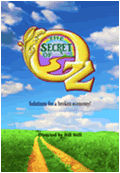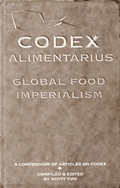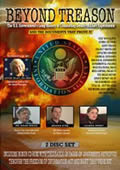SWEET TOXIN, DEADLY DESSERT
By
Jon Christian Ryter
December 1, 2010
NewsWithViews.com
An interesting email crossed my computer a couple of days ago. It stopped my usual morning perusal of the opinions of Main Street Americans on the latest tomfoolery from the social progressive political gadflies inside the DC beltway. The accuracy of the email, concerning a woman who talked about her sister's addiction to diet soft drinks, could not be confirmed because it contained no names, dates nor searchable datastreams to confirm the integrity of the story. And, of course, because there is no way to confirm the story, it stands "disputed" at best (and "refuted" by every reporting site who see a real likelihood of getting a very threatening letter from the lawyers of Aspartame's now expired patent owner, Monsanto who usually jumps on erroneous and easily disproved email reports that make their products look bad—even when they are).
Monsanto no longer has an exclusive right to the use of the combined amino acids, d-aspartate and D-phenylalanine which were then bonded with methanol. In its finished state, the product they created was called aspartame. Aspartame? is a whitee powdery substance that is 160 to 200 times sweeter than sugar. Thus, only minute amounts are needed to sweeten soft drinks. For example, a typical 12-oz. low calorie soft drink will contain only 180 milligrams of aspartame. A regular, non-diet soft drink will contain 41 grams of high frutose corn syrup [HFCS90].
High frutose corn syrup, which is a enzymatic processed natural sugar, is about ten times sweeter than cane sugar (L-aspartate and L-phenylalanine). There are three forms of converted frutose used in food products: HFCS 42, which is less sweet than table sugar, and HFCS 55, which is on par with table sugar and, of course, HDCS 90 which is much sweeter. Unlike aspartame, which is manufactured, frutose is a natural sugar and like most food substances nature produces, is healthy.
Okay, let's sweep that aside now and concentrate on aspartame. There are two problems with aspartame that everyone conveniently ignores because of the profit aspect of the chemicals that replaced nature's own natural sugar.
The lesser problem with aspartame, regardless of the brand name, is the fact that it is 40% aspartic acid. Aspartic acid is a neuroexicter. Neurexicters cause problems with the central nervous system (causing symptoms that mirror Multiple Sclerosis [MS] and Lupus). This has led to claims by many lay people and advocacy groups fighting chemical sweetners (that only idiots use) with their own unsubstantiated claims that aspartame causes MS and Lupus only because aspartame addicts (health nuts who believe infusing their organs with chemicals solely because they have no calories) sometimes exhibit symptoms that are usually treated, medically, as MS and/or Lupus. But, of course, the patients do not get better.
And, that's the best part of aspartame. The worst part? Everything else. The bonding agent that fuses d-aspartate and D-phenylalanine into aspartame is methanol. The Methanol Institute describes methanol as "a chemical building block for hundreds of products that touch our daily lives—and an emerging clean energy fuel." Yes, that's just the thing I want to drink in my soft drink, or eat in solid food products that, in the past, contained regular cane sugar. Methanol is wood alcohol, a hydrocarbon. According to the Methanol Institute, methanol is a toxin. Ingestion, the Institute warns, can cause death (see video on left). When it reaches 86° Fahrenheit, methanol becomes poisonous. Methanol breaks down into formic acid and formaldehyde. Formaldehyde, if you recall, is the substance used to embalm people after death. You might say that people who consume inordinate amounts of soft drinks and foods containing aspartame are slowly embalming themselves as they "diet."
When aspartame was first approved by the FDA, which apparently was aware that methanol breaks down at 86°F, it was approved only for use in soft drinks which are, of course, served cold. It shouldn't take a Ph.D. to realize that when you drink an ice cold beverage it warms to 98.6°F after you swallow it. That may well have been Monsanto's logic, ten years later, when they got aspartame approved by the FDA for use in cake mixes and other prepared foods that are baked before they are sold to the consumers. Today you find aspartame in just about every type of consumable product on the market—including both over-the-counter and prescription medications for children and, I imagine, adults as well.
The Methanol Institute published a safe handling guide for workers in the Methanol industry to protect themselves when handling methanol. On the video, the Institute spokesman said: "Everytime you introduce a new user or a new producer or distributor [...of methanol...] they have to be educated. They need to know about the risks of working with methanol, and how to mitigate against those risks." The purpose of the video (shown here), "...is to promote the safe handling of ethanol and minimize the health risks to employees, work places, the environment and the community." Yeah, sounds like just the thing I want to sip in my Russian Roulette diet cola.
L-aspartate is an amino acid that deals with brain function. Babies born with a L-aspartate deficiency develop an autosomal recessive metabolic disorder that prevents them from processing an amino acid called—you guessed it—L-phenylalanine. When the body cannot metabolize L-phenylalanine, a condition known as "Phenylketonurics" results. People with high levels of L-phenylalanine develop a condition known as hyperphenylalaninemia which is the inability to synthesize a resultant coenzyme called bioterin. A consumer who apparently likes Russian Roulette sodas raised the question, "is phenylalanine in diet soda harmful?" to a Mayo Clinic health blog. Katherine Zeratsky, a Mayo Clinic web nutritionist responded: "Phenylalanine isn't a problem for most people." (Do you know whether or not you are "most people?") "Diet sodas contain a warning about phenylalanine because it can pose a risk to people who have phenylketonuria (PKU). PKU is a rare condition in which the body cannot process phenylalanine." Sources of L-phenylalanine are foods that contain protein such as beef, pork, poultry, fish, milk, yogurt, eggs, cheese, soy and certain nuts and seeds. And, of course, sugar supplements containing aspartame are high in D-phenylalanine.
Stop for a minute and digest what you've been reading. Think, if you will, about what aspartame was supposed to be before it became Aspartame™. A GH Searle & Co. chemist named James Schlatter was, according to Searle, attempting to find a cure for ulcers. But he could just as easily been searching for a cure for PKU since those were the precise amino acids he was experimenting with. d-aspartate and D-phenylalanine, fused together with methanol. The GD Searle website said their scientists were examining the impact of D-tyrosine, D-tryptophan and serotonin might have in curing ulcerative lesions. Since D-phenylalanine breaks down into D-tyrosine, Schlatter may have been examining a backdoor approach to curing ulcers. But, whether he was seeking a cure for ulcers or PKU, his chemical compound was certainly not something I'd care to put in my morning coffee or drink in a cool lemonade or soft drink while working in the yard.
For some unknown reason, according to Schlatter, he spilled some of the experimental mixture on his fingers, then licked it off. (What idiot would do that?) It was sweet. (So, I understand, is antifreeze.) GD Searle & Company, looking for a cure for ulcers, hyperphenylalaninemia or PKU, hit the financial jackpot. They called it Nutrasweet™. Monsanto bought the patent rights from them in 1985. When GD Searle & Co. sold the patent to Monsanto, they knew aspartame would very likely become a litigatious problem. Searle decided to cut their losses and walk away from their invention. See the DVD "Sweet Misery, A Poisoned World."
The Congressional Record, SIS835: 131, August 1, 1985 contains the testimony of the late Dr. Adrian Gross who was a former senior FDA toxicologist. According to reports, Gross testified that he took part in an onsite investigation at Searle Laboratories and found documentation of studies carried out by Searle Labs that show the safety of aspartame was "...to a large extent unreliable...At least one of those studies established beyond any reasonable doubt that aspartame is capable of inducing brain tumors in experimental animals and that this...is of extremely high significance." In his testimony Gross also said, in his view, aspartame was capable of producing not only brain tumors but, brain cancer. For that reason, he said, the FDA should not have been allowed to set a "daily intake" standard for a substance that posed a risk when consumed by humans. In the same Congressional hearings, Searle admitted that they had to consider the possibility of aspartame's complete conversion of diketopiperazine (a brain tumor agent), admitting they did not give that information to the FDA because, they said, the FDA would not have approved aspartame as a dietary supplement.
During the annual American Academy of Environmental Medicine Conference, which met this year on October 21-24, 2010 in LaJolla, California, Dr. William Deagle, MD, was quoted saying: "The European Environmental Association has projected that with the rise of autism caused by toxic foods like aspartame, MSG, fluoride and environmental degradation, by 2014 no one will be born in the Western World that does not have some degree of autism."
On the AAEM website, the following background statement appears on the page promoting the 2010 conference: "A large, growing and pervasive body of scientific evidence has documented that, in a growing segment of our population, a rapidly increasing and complex toxic body burden is contributing to an increasing variety of multi-system, chronic and debilitating conditions and diseases. The resultant adverse and expensive impacts on the quality of life in these patients is reaching alarming proportions...Treatment must address the actual causes: effective removal of toxicant burdens...detoxication pathways and...accommodating individually specific detoxification."
Natural food source L-phenylalanine is an essential amino acid that the body does not produce. When phenylalanine is synthesized in a laboratory, as it was by Schlatter, it is called D-phenylalanine. When a combination of both natural and synthetic phenylalanine are used, it is referred to as DL-phenylalanine. The body gets L-phenylalanine from food (first from the breast milk of their mothers). When the body processes L-phenylalanine it is biologically converted into another amino acid, L-tyrosine which is then altered into L-DOPA, which is converted into dopamine, noreinephrine and epinephrine (adrenaline). When the body can't produce L-aspartate, phenylalanine continues to be extracted from the food you consume—or, possibly, from the aspartame you consume as a sugar substitute until it reaches critical mass in your body and you develop PKU or hyperphenylalaninemia.
It it important to remember that aspartame, which is now found in over 5,000 food products and medicines is a drug. It's not a food derivative like corn syrup or beet frutose even though it fuses two amino acids. Both of the amino acids in aspartame are chemically manufactured. They are fused with another chemical, methanol. Clearly, if L-phenylalanine or D-phenylalanine dissipated from the body like other nutrients, the only problem with aspartame would be the use of a toxin to fuse the two amino acids.
| Subscribe to the NewsWithViews Daily News Alerts! |
However, phenylalanine doesn't dissipate without help. That help comes only from L-aspartate, d-aspartate or DL-aspartate to help the sufferer avoid hyperphenylalaninemia. People with immune deficiencies, diabetics with compromised pancreatic function, are more likely to end up with a debilitating consequence from aspartame. And, I suspect, Type 2 (non-insulin dependent) diabetics might be more prone to opt for a sugar substitute. To date, the FDA has received over 10,000 consumer complaints on aspartame resulting in 92 symptoms, the worst of which is death.














 Share
This Article
Share
This Article






